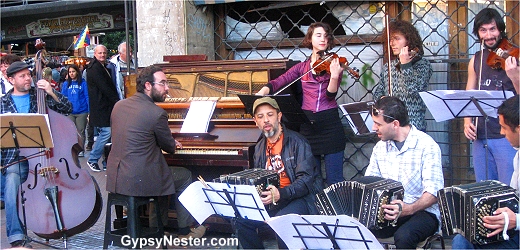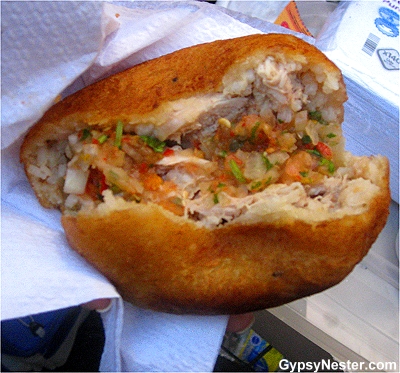
The neighborhood of San Telmo Buenos Aires, like most large urban areas, is actually a collection of varied communities, and as we explored many of them we found each offered unique backgrounds.
San Pedro Gonzalez Telmo, named for the patron saint of seafarers, is considered the oldest neighborhood in the city. It is where the first settlement was established by the Spanish explorer Pedro de Mendoza nearly five hundred years ago.

Our modern day exploration found many interesting colonial buildings lining quaint stone streets in what has become the artistic center of town.
We made our way to Plaza Dorrego, in the heart of San Telmo, because it was Sunday, and on Sunday the place to be is the Feria de San Telmo.

More open-air flea market than fair, this collective sale of antiques, art, clothing, jewelry, food and just about anything else under the sun, has been happening every weekend since 1970.

But it is more than a market, solo guitarists, African drum groups, and a nine piece mini-orchestra of strings, accordions, and even a full sized piano performed along the streets surrounding the plaza.



Wading into the square, we were drawn to a gathering by a crowd and more music, our curiosity led us to a street tango in progress.
A small dance troupe had laid out a wooden dance floor over the ancient cobblestones and was putting on quite a show.

From there we found a woman selling what looked to be empanadas, but she insisted they were something different. A dish unique to Uruguay that had no name.
Nameless or not, we just called it delicious.

Nameless packets of tasty goodness in hand, we continued through the maze of tables, stands, and booths until the sun sank behind the buildings and the vendors began to pack up.
That was our signal to find our way back to the subte, the local name for the subway.
David & Veronica, GypsyNester.com
Delve Deeper:
Dreaming in a Tango Hotel in Buenos Aires
I See Dead People in Buenos Aires
A Tale of Two Parrillas
Cowboyin’ Up in Buenos Aires
Feel The Tradition of La Boca
A Quick Trip to (and Overeating in) Colonia, Uruguay


